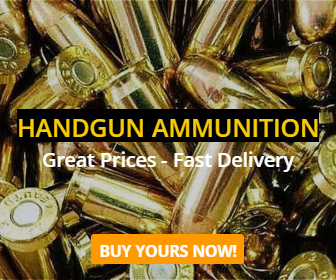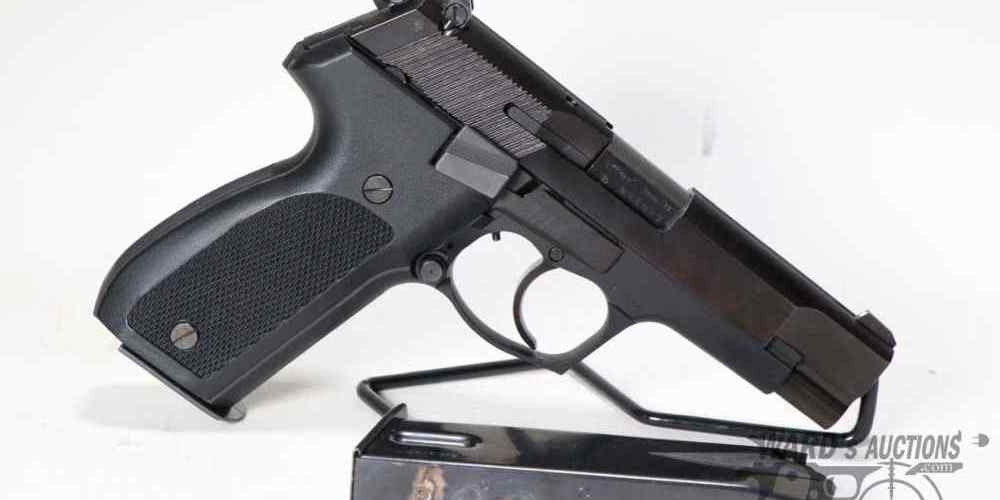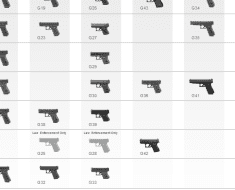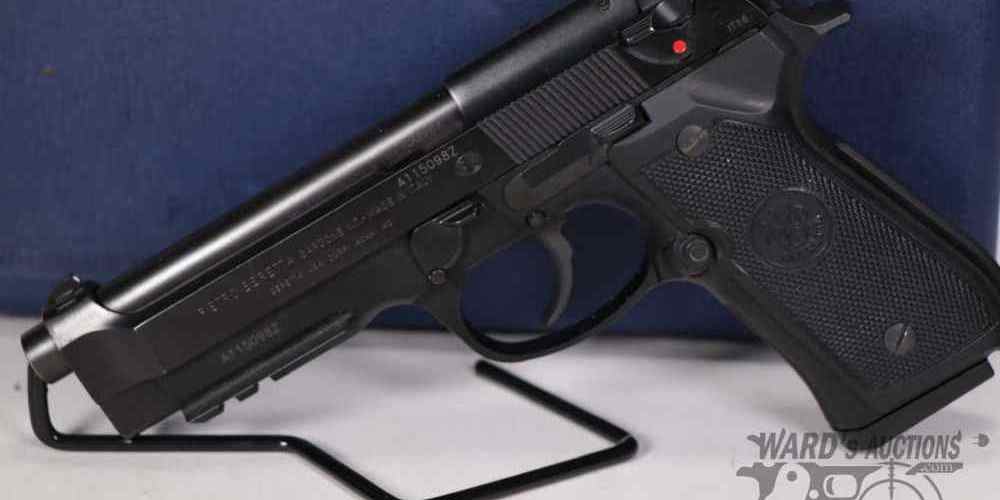Subsonic vs. Supersonic: Know the Difference in Semi-Auto Ammunition.
Subsonic vs. Supersonic: What’s the Difference?
When it comes to choosing ammunition for your semi-automatic firearm, one of the key decisions you’ll need to make is whether to go with subsonic or supersonic rounds. Understanding the differences between these two types of ammunition can help you make an informed decision that suits your shooting needs.
Subsonic ammunition is designed to travel at speeds below the speed of sound, which is approximately 1,125 feet per second at sea level. This slower velocity results in less noise and recoil when compared to supersonic ammunition. Subsonic rounds are often used in situations where stealth and reduced noise are important, such as hunting small game or target shooting in a noise-sensitive area.
On the other hand, supersonic ammunition travels faster than the speed of sound, typically around 1,300 to 1,500 feet per second. This higher velocity results in a louder report and more recoil when compared to subsonic ammunition. Supersonic rounds are often used in situations where maximum velocity and energy transfer are desired, such as hunting larger game or self-defense scenarios.
One of the key differences between subsonic and supersonic ammunition is the ballistic performance of each type. Subsonic rounds tend to have a higher bullet weight and lower muzzle energy compared to supersonic rounds. This can result in decreased accuracy and stopping power at longer distances. Supersonic rounds, on the other hand, have a flatter trajectory and higher muzzle energy, making them more effective at longer ranges.
Another important factor to consider when choosing between subsonic and supersonic ammunition is the type of firearm you are using. Some semi-automatic firearms are designed to function optimally with either subsonic or supersonic ammunition, while others may have specific requirements for one type over the other. It’s important to consult your firearm’s manual or a knowledgeable gunsmith to ensure you are using the correct ammunition for your firearm.
In terms of cost, subsonic ammunition is typically more expensive than supersonic ammunition due to the specialized components and manufacturing processes required to achieve subsonic velocities. However, the reduced noise and recoil of subsonic rounds can make them a worthwhile investment for certain shooting applications.
When it comes to terminal ballistics, both subsonic and supersonic ammunition have their strengths and weaknesses. Subsonic rounds are known for their ability to penetrate barriers and expand reliably, making them a popular choice for hunting and self-defense. Supersonic rounds, on the other hand, are known for their higher velocity and energy transfer, which can result in greater tissue damage and stopping power.
In conclusion, the choice between subsonic and supersonic ammunition for your semi-automatic firearm ultimately comes down to your shooting needs and preferences. Whether you prioritize reduced noise and recoil, maximum velocity and energy transfer, or a balance of both, there is a type of ammunition that will suit your needs. By understanding the differences between subsonic and supersonic ammunition, you can make an informed decision that enhances your shooting experience.
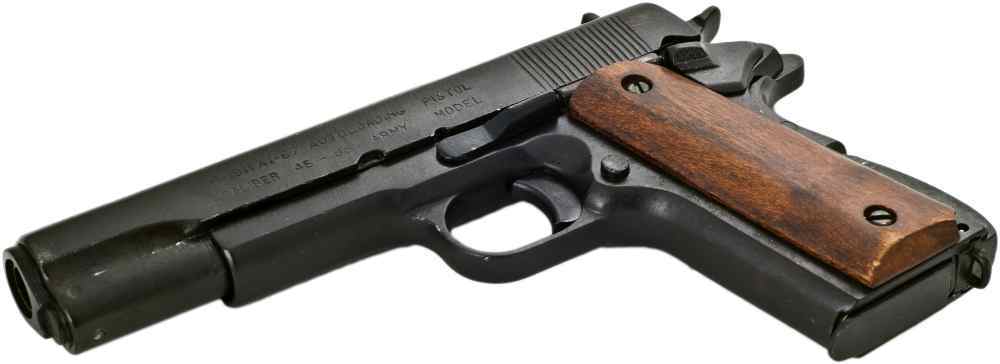
Pros and Cons of Using Subsonic Ammunition
When it comes to choosing ammunition for your semi-automatic firearm, there are a few key factors to consider. One of the most important decisions you’ll need to make is whether to use subsonic or supersonic ammunition. Each type has its own set of pros and cons, so it’s important to understand the differences before making a choice.
Subsonic ammunition is designed to travel at speeds below the speed of sound, which is roughly 1,125 feet per second at sea level. This slower velocity results in less noise and recoil when compared to supersonic ammunition. This can be a major advantage for shooters who are looking to minimize noise and recoil, especially when shooting in confined spaces or around sensitive wildlife.
Another benefit of subsonic ammunition is its ability to maintain accuracy at longer distances. Because subsonic rounds travel at a slower speed, they are less affected by wind and other environmental factors, making them a good choice for precision shooting. This can be particularly useful for hunters or competitive shooters who need to make accurate shots at extended ranges.
On the flip side, subsonic ammunition does have some drawbacks. One of the main disadvantages is its reduced stopping power compared to supersonic rounds. Because subsonic bullets travel at a slower speed, they may not have the same impact on a target as faster-moving ammunition. This can be a concern for shooters who are using their firearm for self-defense or hunting larger game.
Additionally, subsonic ammunition can be more expensive than supersonic rounds. This is due to the specialized manufacturing processes required to produce subsonic bullets that are capable of maintaining accuracy at lower speeds. While the cost difference may not be significant for casual shooters, it can add up over time for those who shoot frequently.
Despite these drawbacks, subsonic ammunition can be a valuable option for shooters who prioritize accuracy, reduced noise, and minimal recoil. By understanding the pros and cons of subsonic ammunition, you can make an informed decision about whether it’s the right choice for your shooting needs.
In conclusion, subsonic ammunition offers a number of benefits for shooters who are looking to minimize noise and recoil, maintain accuracy at longer distances, and reduce the impact on their target. While it may have some drawbacks in terms of stopping power and cost, these factors can be outweighed by the advantages of using subsonic rounds. By weighing the pros and cons of subsonic ammunition, you can determine whether it’s the right choice for your semi-automatic firearm.
Pros and Cons of Using Supersonic Ammunition
When it comes to choosing ammunition for your semi-automatic firearm, one of the key decisions you’ll need to make is whether to use subsonic or supersonic rounds. Each type of ammunition has its own set of pros and cons, so it’s important to understand the differences between the two before making a decision.
Supersonic ammunition is designed to travel faster than the speed of sound, which is approximately 1,125 feet per second at sea level. This high velocity allows supersonic rounds to deliver more energy upon impact, making them ideal for hunting and self-defense applications. Additionally, supersonic ammunition typically has a flatter trajectory than subsonic rounds, which can make it easier to hit targets at longer distances.
However, there are some drawbacks to using supersonic ammunition. One of the main disadvantages is the increased noise and recoil that comes with firing high-velocity rounds. This can make shooting more uncomfortable for some shooters, especially those who are sensitive to loud noises or have limited experience with firearms. Additionally, supersonic ammunition can be more expensive than subsonic rounds, which may be a consideration for budget-conscious shooters.
On the other hand, subsonic ammunition is designed to travel at speeds below the speed of sound. While subsonic rounds may not deliver as much energy upon impact as supersonic ammunition, they are typically quieter and produce less recoil when fired. This can make shooting more comfortable and enjoyable for some shooters, especially those who are new to firearms or who have limited experience with high-powered weapons.
Another advantage of subsonic ammunition is its reduced muzzle blast, which can help to preserve your hearing and reduce the risk of hearing damage. Additionally, subsonic rounds are often less expensive than supersonic ammunition, making them a more cost-effective option for shooters who are looking to save money on their ammunition purchases.
However, there are some drawbacks to using subsonic ammunition as well. One of the main disadvantages is the reduced energy and stopping power of subsonic rounds compared to supersonic ammunition. This can make subsonic rounds less effective for hunting or self-defense applications, especially against larger or more heavily armored targets.
In conclusion, both subsonic and supersonic ammunition have their own set of pros and cons, and the best choice for you will depend on your individual needs and preferences. If you prioritize accuracy and energy delivery, supersonic ammunition may be the better option for you. On the other hand, if you value reduced noise and recoil, subsonic ammunition may be the more suitable choice.
Ultimately, the most important thing is to choose ammunition that you are comfortable shooting and that meets your specific requirements. By understanding the differences between subsonic and supersonic ammunition, you can make an informed decision that will help you get the most out of your semi-automatic firearm.
How Semi-Auto Firearms Handle Subsonic vs. Supersonic Ammunition
When it comes to semi-automatic firearms, understanding the difference between subsonic and supersonic ammunition is crucial. The way these firearms handle each type of ammunition can have a significant impact on their performance and effectiveness. Let’s delve into the world of semi-auto firearms and explore how they handle subsonic and supersonic ammunition.
First, let’s define what subsonic and supersonic ammunition are. Subsonic ammunition refers to rounds that travel at speeds below the speed of sound, which is roughly 1,125 feet per second at sea level. On the other hand, supersonic ammunition travels faster than the speed of sound. The difference in speed between these two types of ammunition can affect how they perform in semi-automatic firearms.
When it comes to semi-auto firearms, the cycling of the action is crucial for proper functioning. Subsonic ammunition tends to have less recoil and muzzle blast compared to supersonic ammunition. This can affect how the firearm cycles, as the amount of energy generated by the round plays a role in how the action operates. In some cases, subsonic ammunition may not provide enough energy to cycle the action properly, leading to potential malfunctions.
Supersonic ammunition, on the other hand, generates more energy due to its higher velocity. This can result in more reliable cycling of the action in semi-automatic firearms. However, the increased recoil and muzzle blast associated with supersonic ammunition may impact the shooter’s ability to stay on target and make follow-up shots quickly.
It’s important to note that not all semi-automatic firearms are created equal when it comes to handling subsonic and supersonic ammunition. Some firearms are specifically designed to work with subsonic rounds, while others may be optimized for supersonic ammunition. Understanding the capabilities of your firearm and selecting the appropriate ammunition is key to ensuring reliable performance.
In some cases, shooters may choose to use subsonic ammunition for its reduced noise and recoil. This can be advantageous for training purposes or when shooting in confined spaces where noise levels need to be kept to a minimum. However, it’s important to be aware of how subsonic ammunition may affect the cycling of your firearm and be prepared to address any potential issues that may arise.
On the other hand, supersonic ammunition is often preferred for its increased velocity and energy. This can result in better terminal ballistics and improved performance at longer ranges. Shooters looking for maximum effectiveness may opt for supersonic rounds, especially when hunting or engaging targets at extended distances.
Ultimately, the choice between subsonic and supersonic ammunition for semi-automatic firearms comes down to personal preference and intended use. Understanding how each type of ammunition affects the cycling of your firearm and its performance is key to making an informed decision. Whether you prefer the reduced noise and recoil of subsonic rounds or the increased velocity and energy of supersonic ammunition, knowing how your firearm handles each type of round is essential for optimal performance.
Tips for Choosing the Right Ammunition for Your Semi-Auto Firearm
When it comes to choosing the right ammunition for your semi-automatic firearm, there are a few key factors to consider. One of the most important considerations is whether to use subsonic or supersonic ammunition. Understanding the differences between these two types of ammunition can help you make an informed decision that will optimize the performance of your firearm.
Subsonic ammunition is designed to travel at speeds below the speed of sound, which is approximately 1,125 feet per second at sea level. This slower velocity results in less noise and recoil when the round is fired. Subsonic ammunition is often preferred by shooters who are looking for a quieter shooting experience, as well as those who are concerned about disturbing neighbors or wildlife.
On the other hand, supersonic ammunition is designed to travel at speeds above the speed of sound. This higher velocity results in a louder report and more recoil when the round is fired. Supersonic ammunition is often preferred by shooters who are looking for maximum stopping power and long-range accuracy.
When choosing between subsonic and supersonic ammunition for your semi-automatic firearm, it’s important to consider the intended use of the firearm. If you are using your firearm for hunting or self-defense, supersonic ammunition may be the better choice due to its increased stopping power. However, if you are using your firearm for target shooting or plinking, subsonic ammunition may be the better choice due to its reduced noise and recoil.
Another factor to consider when choosing ammunition for your semi-automatic firearm is the type of bullet. Full metal jacket (FMJ) bullets are a popular choice for target shooting and plinking, as they offer good penetration and are less expensive than other types of bullets. Hollow point bullets are a popular choice for hunting and self-defense, as they expand upon impact and create a larger wound channel.
It’s also important to consider the weight of the bullet when choosing ammunition for your semi-automatic firearm. Heavier bullets typically have more recoil and muzzle flip, but they also offer better penetration and stopping power. Lighter bullets typically have less recoil and muzzle flip, but they may not penetrate as deeply or create as large of a wound channel.
In addition to considering the type of ammunition and bullet weight, it’s important to consider the quality of the ammunition you are using. Cheap, low-quality ammunition can cause malfunctions in your semi-automatic firearm and may not be as accurate or reliable as higher-quality ammunition. It’s worth investing in high-quality ammunition from reputable manufacturers to ensure the best performance from your firearm.
In conclusion, when choosing ammunition for your semi-automatic firearm, it’s important to consider whether to use subsonic or supersonic ammunition, as well as the type of bullet, bullet weight, and quality of the ammunition. By taking these factors into account, you can optimize the performance of your firearm and enjoy a more enjoyable shooting experience.


